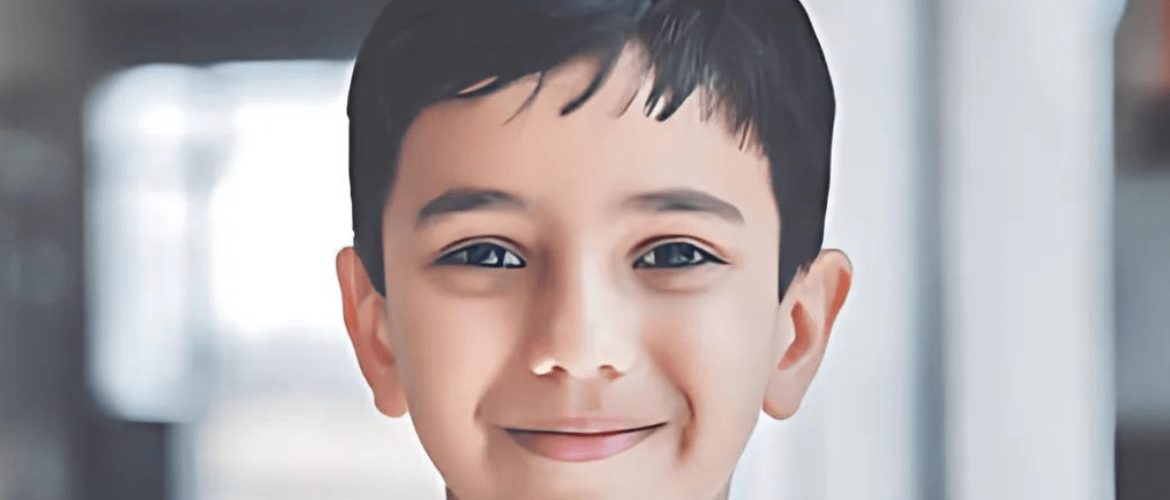Introduction:
Vision and brain development are closely linked. The ability to focus and distinguish shapes is underdeveloped in an infant. Their visual acuity is generally about 6/120. However, as the child grows, their eyes develop gradually and eyeballs also grow. Normal visual acuity of children is attained by the age of 5 years and normal depth perception will be completely achieved by the time the child reaches teenage. The visual pathways in the brain also undergoes developmental change as the child grows. It is therefore very crucial to take care of their eye health at each stage.
Why do children have vision problems?
We don’t find children generally complaining of any vision problems. However, poor eye health will not only impact child’s developmental and learning but, may also lead to vision loss. It is therefore very necessary to first understand child’s eye problem. This is done by observing if child is able to recognise mother, have problem in reaching for objects or finds it difficult to walk without bumping into objects. The further check includes looking for symptoms of eye problems such as difficulty in seeing, squint eyes, abnormal head posture, white reflex in eyes and even abnormally smaller or bigger eyes.
Common Eye Problems
The common vision problems seen in children are Myopia, Hyperopia, Lazy eye, depth perception, crossed-eyes, double vision, eye fatigue and difficulties in focusing. Eye problems in children can be a result of many factors such as
- Heredity-linked – a family history of genetic defects such as congenital cataracts, corneal dystrophy, Retinal dystrophy, tumors like retinoblastoma may find a comeback in the children.
- Technology-led – extensive use of mobiles, computers and TV leads to prolonged screen time and this leads to increased myopia progression in children
- Lifestyle-induced – Access to an array of digital devices, lack of playgrounds and restrictive outdoor activities among children has led to a sedentary lifestyle
Natural Treatment to improve eye health
While unhealthy and technology dependent lifestyle have led to poor eye health and vision problems in children, it is possible to improve a child’s eyesight through natural ways
Healthy lifestyle starts with healthy diet and good eye habits.
- Healthy diet – include foods that can improve child’s vision such as fruits, green leafy vegetables, eggs, liver, fish and meat in a child’s diet.
- Spinach, carrots, sweet potato, papaya kale and broccoli are rich in Vitamin A and carotenoids and help maintain a healthy retina, prevents cataract and macular degeneration. Further, these foods being rich in antioxidants, protect the child’s eye from the harmful sun rays, helps and gain good eyesight.
- Foods rich in omega-3 fatty prevents the condition called as dry eye
- Citrus fruits are rich in Vitamin C fortifies eye health and reduces the risk of cataract in your child.
- Reduce screen time – continuous and close-up viewing of the digital screens leads to eye strain, blurred vision and dry eyes
- Increase outdoor activities- Encourage children for outdoor activities and games. Outdoor games not only prevent the onset and progression of short-sightedness, but also improves hand -eye coordination and stimulates visual development in children.
- Eye exercises: 20/20/20 rule. When using computer screens, or watching TV’s ensure children take a break of 20 seconds once, every 20 minutes and look 20 feet away. Blinking 20 times can give additional benefits.
- Routine eye examinations – Regular eye test at various stages of growth helps in early identification and treatment of child hood eye problems such as refractive errors, squint, cataract lazy eye or myopia.
- Avoid eye injuries- Use of protective eye gear or goggles will help avoid any eye injury during any sports activity. Further, care should be taken while bursting of crackers with children around.
Conclusion:
In today’s technology-oriented lifestyle, it is important to give attention to child’s eye health during their growing up stages. Regular eye check-up helps in detection of refractive errors, prevention of amblyopia and identification of tumors like retinoblastoma, which is crucial to save child’s life. Moreover, appropriate ophthalmic care, good nutrition, lifestyle changes, good sleep and rest will help children maintain a perfect vision.

No comments yet.